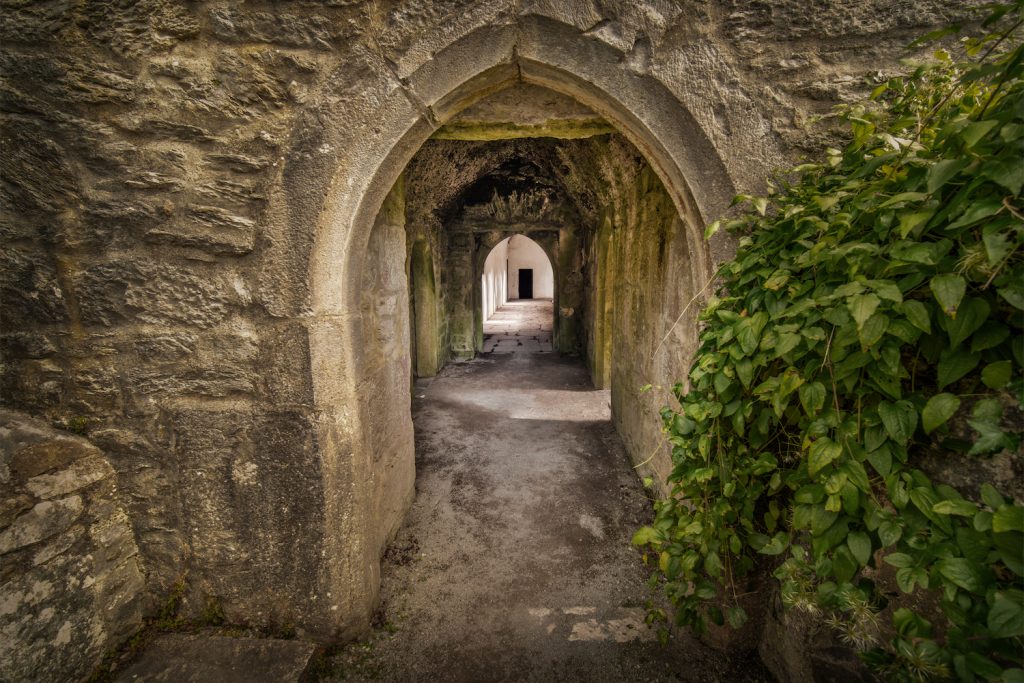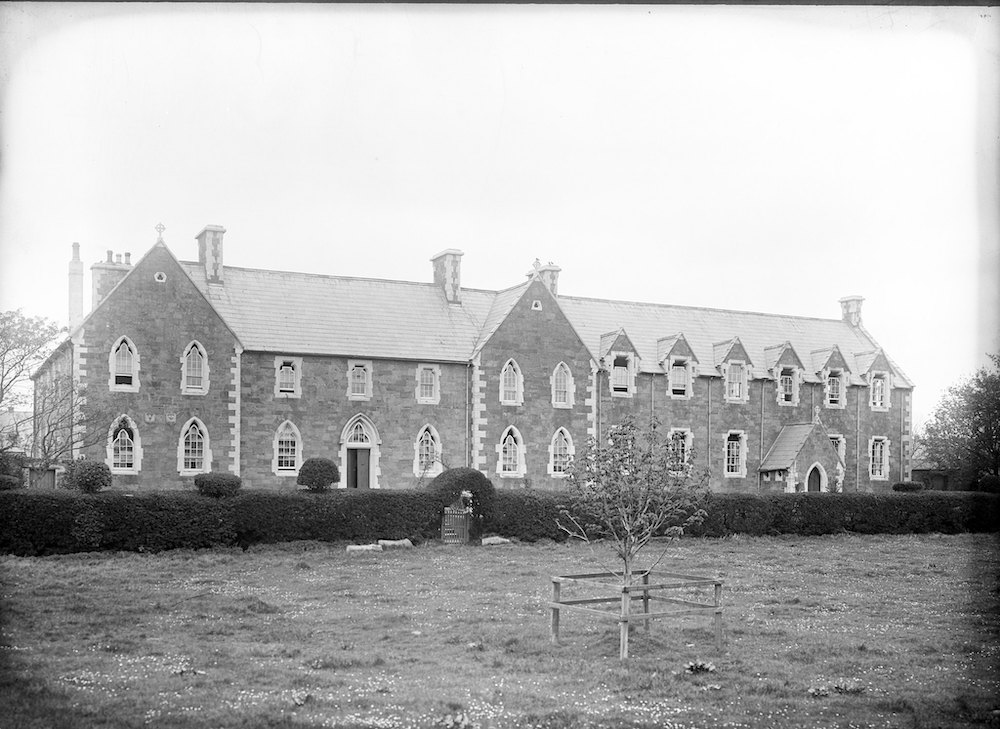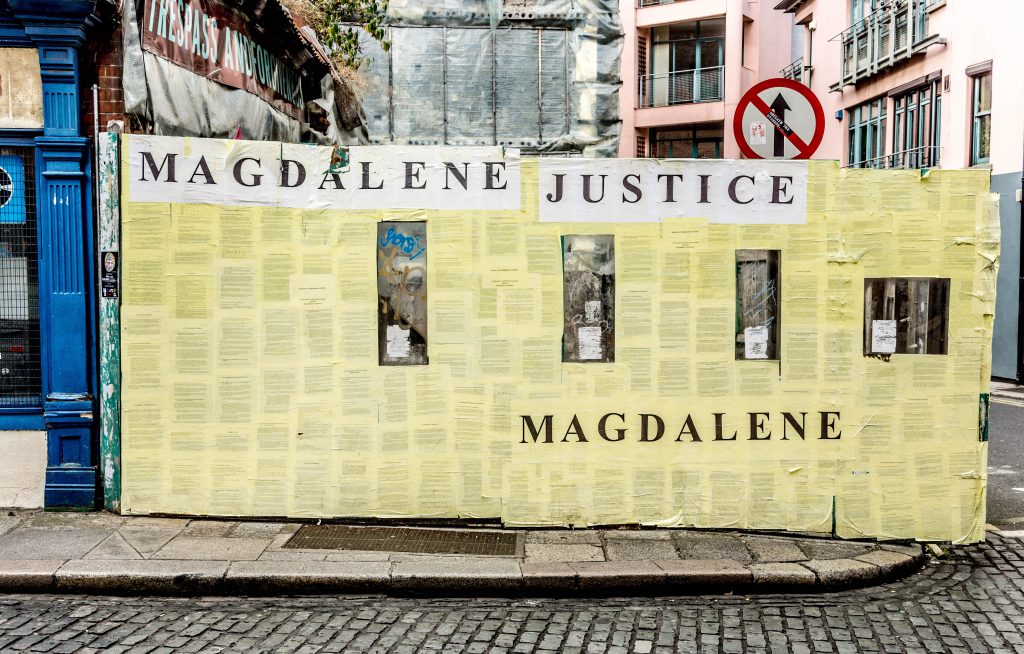Difficult Truths: Confronting Irish Industrial Schools

This article was originally published at Otherwise magazine and has been republished with permission as a lightly edited excerpt.
CONSTELLATIONS
The 1918 Spanish flu altered the course of my grandfather’s life dramatically. My grandfather’s father and baby sister died from the flu just before Christmas 1918, leaving his mother, my great-grandmother, alone to bring up a large family on a rural farm in the southwest of Ireland. Loss wrought by that pandemic would beget many more losses and absences in his life. Even 100 years later, in the midst of a different pandemic, the constellations of loss brought about by the 1918 Spanish flu still linger, shaping my familial memory. My attempt to retrace and re-inherit some of my grandfather’s past through paper and file is an effort to gather up the splinters, to scaffold the lineaments of half-lit memory and story.
My grandfather was placed in St. Joseph’s Industrial School in Tralee in the county of Kerry in the southwest of Ireland; my grand-aunt, his sister, in the Sisters of Mercy–run orphanage in Killarney. Two different towns, set apart by windy, potholed roads. Their mother, my great-grandmother, a young widow, continued to live on their small rocky farm, set deep in a heathered valley, some 27 miles away. As children, we were often told by my mother that our grandfather had learned his trade as a tailor in what she called an orphanage—not yet understanding that it was, in fact, a Catholic-run industrial school. This was a story that emphatically emphasized the education he had received from the Catholic Church. A story wrapped in a benign temperament; so, we took it for what it seemed to be as we were growing up.
Even as a child who took delight in stories of orphans, I never questioned why or how my grandfather and his sister spent a good part of their childhoods in an orphanage when their mother was still alive. Even though I was not yet fully attuned to the everyday violences of the Catholic Church, this still surprises, even shocks me.
My task now is to fill in the spaces where so many questions abound.
I suppose it became part of a familial script that was rehearsed without interrogation. My father often told me that, as a 1950s child wandering through the hilly, windy suburb of Sunday’s Well that ribbons the edges of Cork city’s northside, he would see children from an industrial school out walking. There would always be a Catholic priest or nun standing sentry beside them. He told me he used to feel sorry for the children. He believed that they were orphans, parents long dead.
My father, even though he was just a young child, was not the only one who paused to watch and think about these imprisoned children. That is just how public secrets work. They pin us to the ground, momentarily, before we shrug them off and go again about our daily business.
SEARCHING
It would be many years before I would return to research the story of my grandfather’s stolen childhood. I started by applying for my grandfather’s death certificate, that most curious form of passport, one that would allow entry, I hoped, into his past. The death certificate arrived in the post toward the end of the first COVID-19 lockdown in 2020 on a beautiful Irish May day soaked in crystalline sunlight. It was an odd time to start to delve into the past, to attempt to source records and information, when so many were enclosed in their homes, unable (or too busy or just reluctant) to access the files that I sought.
I accidentally stumbled across a site developed by the Irish Centre for Human Rights at the National University of Ireland, Galway: a treasure trove of letter templates, instruction, and solidarity. It guides and directs survivors and their families on the correct language to use when seeking records and provides a list to target one’s freedom of information or EU General Data Protection Regulation requests. It greatly simplifies what is a daunting, unwieldy process.
I copied and pasted the template into an email, adding the details of my grandfather’s birth and death, as well as the dates we suspected he might have been in St. Joseph’s Industrial School in Tralee. I attached my passport and my mother’s passport—identification to support our right, as next of kin, to seek out my grandfather’s story.
So began an epistolatory relationship with the sentinels of church and government records. The slowness of archival time stubbornly prevailed. We waited.
Our search would yield some abrupt exchanges, many stultifying. It was a stark reminder of how challenging this piecing together of one’s past, one’s own story, must be for many survivors, re-traumatized at each calcifying knockback. It made clear that to face archives of abuse is a perilous undertaking. The archive is a contradictory place of lies, deceit, and occasional truth, where fictive responses and state power carve out particular relationships to the past, the present, and the future. For some, the archive is thus a place of unwitting malice. Stories belonging to the little folk are often coded through a very particular lens. Their truths (our truths) hibernate in a difficult language that has to be pushed against. Not an easy quest for survivors of trauma.
Weeks of rejection and failure in my quest to uncover any records finally led to a phone call with an industrial school survivor from the 1960s. He was quick to suggest that I try the Christian Brothers’ archive in Marino on Dublin’s northside. He told me that he believed, however, that many records had been made to disappear—that Rome had made sure of this. His was an unalloyed belief that the Catholic Church had traded in the missing: missing children and women, missing bodies, missing files.
FRAGMENTS
Just like that, the past can spill out, radically altering the present, remaking erstwhile speculation. My encounter with the Christian Brothers through the Edmund Rice archivist was surprisingly swift and revealing. The exchange, unexpectedly friendly and helpful. The archivist finds a file on my grandfather and emails it to me within a few days. She tells me in the email that the recordkeepers of the time seem to have gotten his date of birth wrong, that it does not match his death certificate details. It is him, though; all other details match. I am not surprised by the errors in my grandfather’s file, reflective of the poor and lazy recordkeeping of that time.
The writing on my grandfather’s paperwork is tremulous in hand, a style of the time. Spindly, careless letters inhabit a page that tells me my grandfather was found wandering the roads “destitute” at 11 ¾ years. So he was “detained.” The document gives no sense of where he was found wandering, whether it was a few—or many—meters from his homeplace, a fact that was most likely purposefully blurred. An abrupt, wounding line follows this and makes the claim that his mother was not showing him proper guardianship. His age is wrong, of course; he is younger than 11. In another section of the document giving his physical description, words such as robust and rosy indicate health. He is educated, it seems, so they decipher through his reading ability.
To face archives of abuse is a perilous undertaking.
The document feels as if it is one of erasure—my great-grandmother’s and my grandfather’s story made diminutive. There is something else lingering, though, in the interstices of this description and “maybe” fact. It appears to be a wrestle of a kind—between authority and my great-grandmother. My grandfather is made a “detainee” (the word blisters upon reading) of St. Joseph’s Industrial School in Tralee. He is placed there through the district court in Killorglin town; he is, like many others, allocated a number, a complete redefinition of his identity. It seems his mother is successful in getting him out almost two months later, but then, for some reason (undocumented), he is recommitted that very same day. He spends four years there until he is finally released.
My task now is to fill in the spaces where so many questions abound.
I tell my sister. I tell one of my brothers. We invent stories—my sister and I, my brother and I. We guess at what might have happened. I discuss it with a friend; together we imagine the different scenarios that my great-grandmother might have faced as a woman alone, working a farm in order to support her children. In our conjuring up of different possibilities, in our remaining open to the past, we move beyond my grandfather’s file to inhabit the suspended fringes of a time we can only know through document and photo.
SPECULATIONS
See them there. My grandfather and my great-grandmother living lives wreathed in the disdain so commonly shown to single or widowed mothers in Ireland at a particular time. Working-class children seized from their struggling mothers, or women placed in Magdalene laundries made for cheap labor for the Catholic industrial complex.
I wondered as I reread my grandfather’s file whether he had been targeted by a cruelty man, a putative social worker—those most egregious of inspectors from the National Society for the Prevention of Cruelty to Children. The complicity of cruelty men, in serving the needs of the Catholic industrial complex, has been well documented in literary and scholarly texts. He, for it was nearly always a “he,” a marauder of the poor, loomed large in the working-class imagination, as a real-life bogeyman. Often an active agent in stratifying the poor into categories of deserving and undeserving, the cruelty man worked hard to ensure a steady flow of children into industrial schools.
See my great-grandmother working with the gray grit of the stony mountainous soil on her farm. Hear her children laugh. Understand that they do help her but more often, they wander and play as children do, balancing and laughing joyously on hummocks of rock. See them now, young, earnest, playful, sitting in the one green meadow their family owns. See them snatched away by a cruelty man purporting to save them. Hear their cries. Feel their anguish.
Ask if, in the shadow of their grief, the loss of husband and baby daughter from a long-eroding pandemic, whether my great-grandmother deserved to have her remaining children removed from her. Did my grandfather deserve to be hauled off to a small district court and placed in an industrial school for the remaining years of his childhood? Should his younger sister have had to endure life in an orphanage and Magdalene laundry? Look at him, my grandfather, a little boy, he is about the same age as my daughter is right now; he is terrified, he is alone. He does not know what he has done so as to be taken away from his mother in this way. Look at him, was it the cruelty man who did this to him and his younger sister?
A friend suggests that perhaps my great-grandmother relinquished her two children to the church, as so many impoverished families had done, imagining it to be a temporary solution until they were back on their feet. They did so in trust, in the belief that their children would come home again, but mostly they never did. Children ended up in the hard grip of the Catholic Church and, even with many a petition, parents often failed in getting permission to bring their children home.
I bring this suggestion to my sister, and we consider it as a real possibility. Look at her, my great-grandmother, struggling on her farm, bent over, working steadily. Did she feel she had to send her children away? I go back to my grandfather’s file; it does not seem so. In the weave of offhand documenting resides a form of moralizing, a judgment of her fitness as she struggled. She and her children are steadfastly categorized as undeserving, their lives recast through the moral censure of church and state.
I hesitate to tell my mother what is written on my grandfather’s file in full. I realize quickly that this is an unfairness. She has consented to accompany me on this journey. Yet now I find myself reluctant to share in full the wounding words I have uncovered. This is out of a sense of protection for her gentle nature.
I decide, however, quite suddenly on a phone call with my parents, to read what I have uncovered. I blurt it out, unplanned and jumbled. There is silence, long and impenetrable, then tears. My father, accustomed to wearing his discontent like a badge, swears at me furiously. A moment of quietude follows. Then, together, we reread the lines; we make sense, we think about the contexts of production in which the convenient fictions of this file were scripted. We, my mother, father, and I, know there is so much more to this story, so I decide to carry on with my search. I do so, however, in full knowledge that I have certainly awoken particular kinds of ghosts.
To continue on, read the full article published at Otherwise magazine.



























